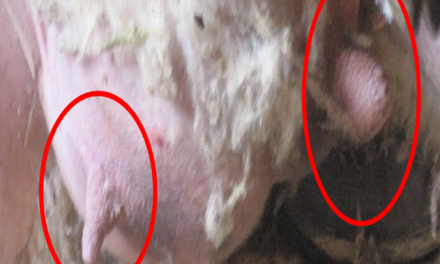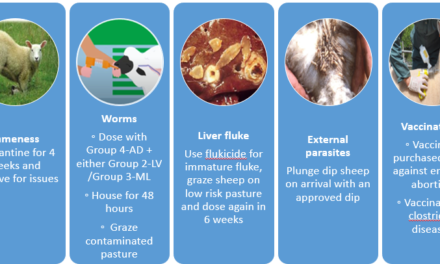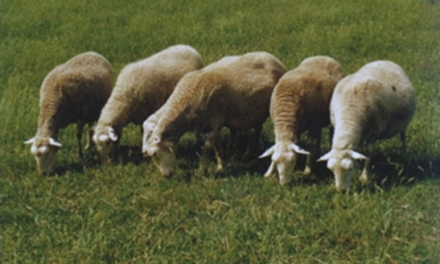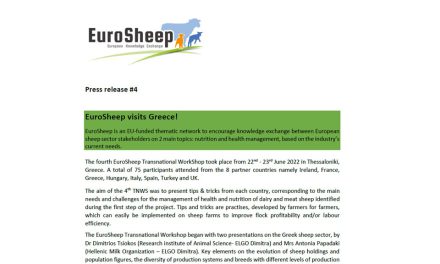This post is also available in:
![]()
![]()
![]()
![]()
Assessing mineral status in sheep
Introduction
- Sixteen minerals have been classified as nutritionally essential in sheep diets. Macro-minerals are required in large amounts. They include sodium (Na), chloride (Cl), calcium (Ca), phosphorus (P), magnesium (Mg), Potassium (K), and Sulfur (S). Micro-minerals, also called trace-elements, are required in small amounts. They include copper (Cu), iron (Fe), manganese (Mn), zinc (Zn), molybdenum (Mo), cobalt (Co), selenium (Se), iodine (I) and fluoride (Fl), are required in small amounts.
- Mineral requirements are generally expressed or as a percentage of the diet (dry matter basis) for macro-minerals and in ppm (part per million), for micro-minerals. One ppm is equal to1 milligram per kilogram (mg/kg) or .0001%.
- Mineral levels in plants are dependent upon the interaction of a number of factors, including soil, plant species, stage of maturity, yield, pasture management and climate. Most naturally occurring mineral deficiencies or, more rarely, mineral excess, in sheep are associated with specific regions and are directly related to soil characteristics.
The following table shows some clinical signs or disease that can be related to macro and/or micro-minerals deficiencies :
|
Macro-minerals |
Micro-minerals (Trace elements) |
||||||||||
|
Trouble |
Na |
P |
Ca |
Mg |
Cu |
Fe |
Zn |
Co |
Se |
Mn |
I |
|
¯production |
+ |
+ |
+ |
+ |
+ |
+ |
+ |
+ |
+ |
+ |
+ |
|
¯ appetite |
++ |
+ |
+ |
+ |
+ |
++ |
++ |
+ |
|||
|
cachexia |
+ |
+ |
+ |
++ |
+ ? |
||||||
|
¯ Immune functions |
+ |
+ |
+ |
+ |
+ |
++ |
+ (?) |
||||
|
Metabolic diseases |
++ |
++ |
++ |
||||||||
|
Infertility |
+ |
+ |
+ |
+ |
+ |
+ |
+ |
+ |
+ |
||
|
Abortions |
+ |
+ |
|||||||||
|
Retained placenta / vaginal prolapse |
++ |
+ |
+ |
||||||||
|
Anaemia |
+ |
++ |
+ |
||||||||
|
Muscular diseases |
+ |
+ ? |
++ |
||||||||
|
Lameness |
+ |
+ |
+ |
+ |
+ |
||||||
|
Osteodystrophia |
++ |
++ |
+ |
+ |
++ |
||||||
|
Skin / hair diseases |
++ |
++ |
++ |
++ |
|||||||
|
Goitre |
++ |
||||||||||
|
Diarrhoea |
+ |
+ |
+ |
||||||||
|
Pica |
++ |
+ |
+ |
+ |
+ |
+ |
|||||
|
Na : sodium P : phosphorus Ca : calcium
|
Mg : magnesium Cu : copper Fe : iron Zn : zinc |
Co: cobalt I :iodine Se : selenium Mn : manganese |
|||||||||
Assessing the mineral status in sheep
The determination of animal’s mineral status in practice is often very difficult. The body has a significant storage capability for many of the minerals (for example, calcium and phosphorus in bones, iron in the blood, cooper, zinc and selenium in the liver). Therefore, until body reserves are depleted, symptoms of deficiency may not be apparent. For some macro-elements, the body homeostasis makes it difficult to assess the actual status by any simple way.
The following figure shows the different stages of mineral deficiencies, which, actually should be seen as a continuum. Depending on whether tissue (liver..) or blood samples are analyzed or whether circulating minerals or the enzymatic systems they are involved in are targeted, different levels of deficiency can be evidenced.
Assessing the activity of some enzyme systems may be more accurate than directly assessing the concentration of trace-elements. For instance, assessing the Glutathion-peroxydase activity in red blood cells (GSHpx), which depends upon selenium, allows for estimating long term deficiency in selenium while the blood concentration in selenium (free mineral) may be affected by recent intakes (5-10 days).
Similarly, the cobalt status is assessed by the measurement of vitamin B12 concentration rather because Vitamin B12 contains one atom of cobalt.

- Assessment based on clinical examination
- Easy if clear and severe clinical signs (Co, Cu, Se, I, Mn) : severe deficiency
- Difficult if functional (mild) deficiency
- Impossible if marginal deficiency
- Assessment based of intakes from the diet
- Difficult because of high variability and diversity of sources
- Interactions between trace-elements not assessable
- Assessment based on biological sample
- Hairs (Cu, Zn, Se) – Inaccurate and variable
- Urine (I) – Inaccurate and variable
- Milk : (Se, I) – Inaccurate and variable
- Blood plasma / red cells (almost all trace-elements). Pool sampling analysis suitable unless high variability between animals is possible or looked for.
- Number of animals needed
- Ideal : 10 – 12.
- in practice : 5 – 7 because of the cost
- Cost
- 11 to 30 euros / animal / trace-element
- How to choose the sheep to sample?
- Should be representative of the group that is under evaluation (physiological status, diet, etc.)
- Do not sample animals with obvious inflammatory disorders (strongly influence on copper and zinc plasma concentration : ì Cu î Zn).
Reference values
Some guidelines are provided for a few key trace-elements in the following table but references values may depend on the method used in your lab. The thresholds between marginal, mild and severe deficiency are seldom established.
|
|
Normal values |
Marginal deficiency |
mild deficiency |
severe deficiency |
|
Zinc (plasma, µmol/L) |
15-18 |
10-15 |
6-10 |
< 6 |
|
Copper (plasma, µmol/L) |
14-18 |
10-14 |
6-10 |
< 6 |
|
Vit B12 (plasma, pmol/L) For cobalt assessment |
> 200 |
? |
< 150 |
< 150 |
|
Selenium (plasma, µg/L) |
>90 |
60-90 |
30-60 |
<30 |
|
GSHpx (UI/gHB) For selenium assessment |
150 – 400 |
75 -150 |
50-75 |
< 50 |







